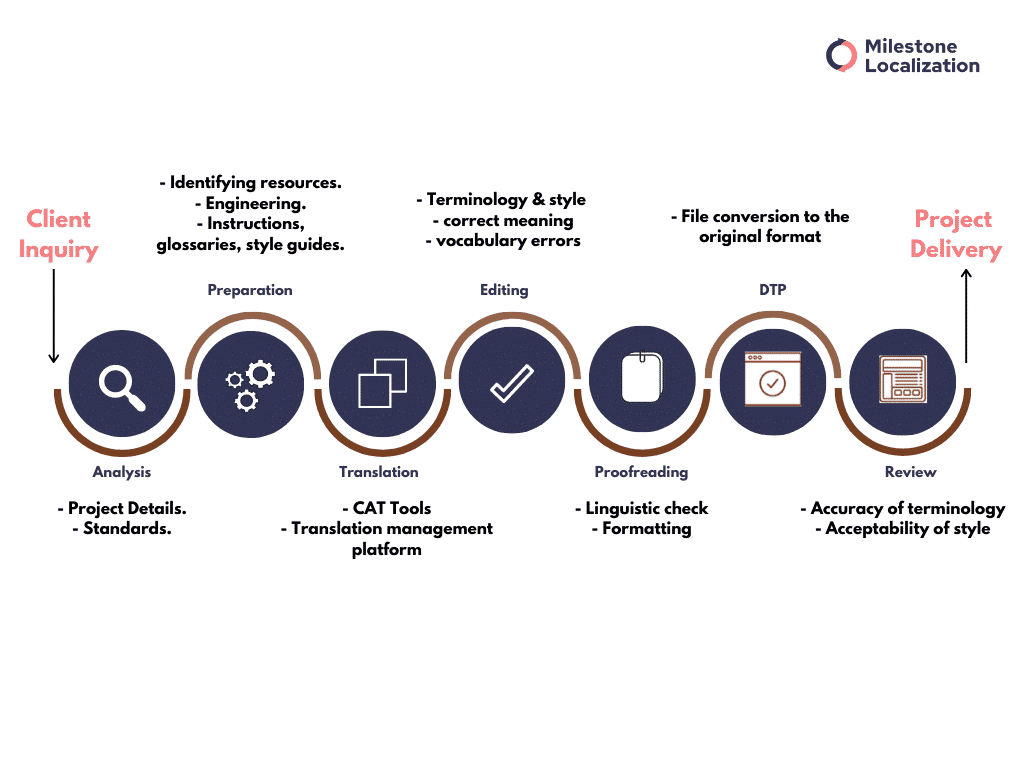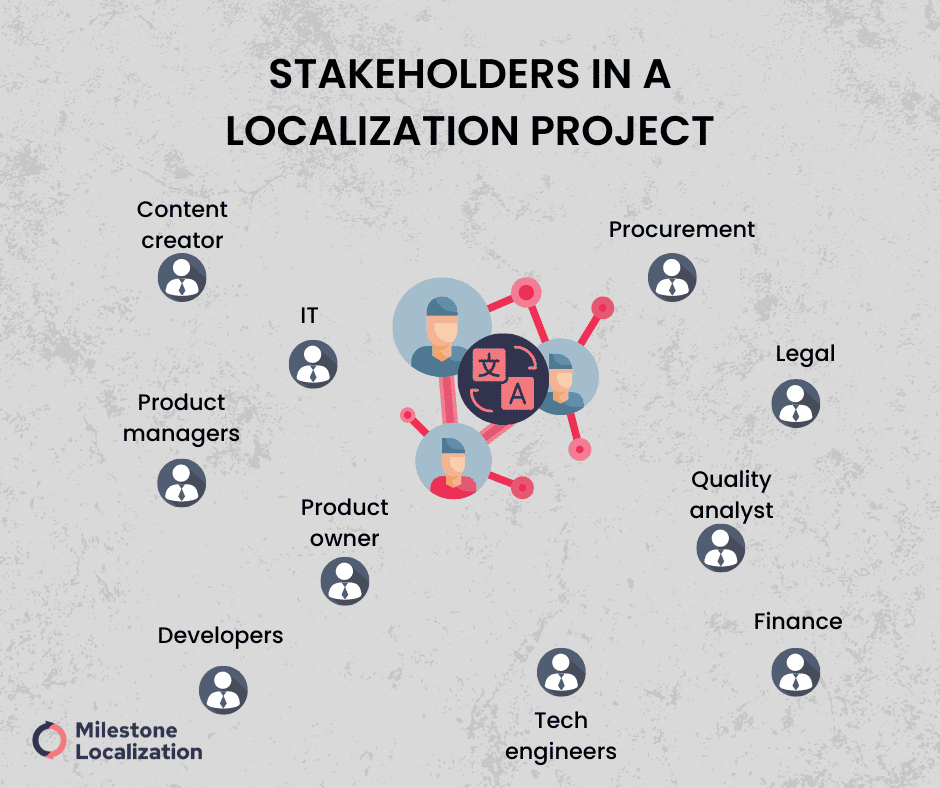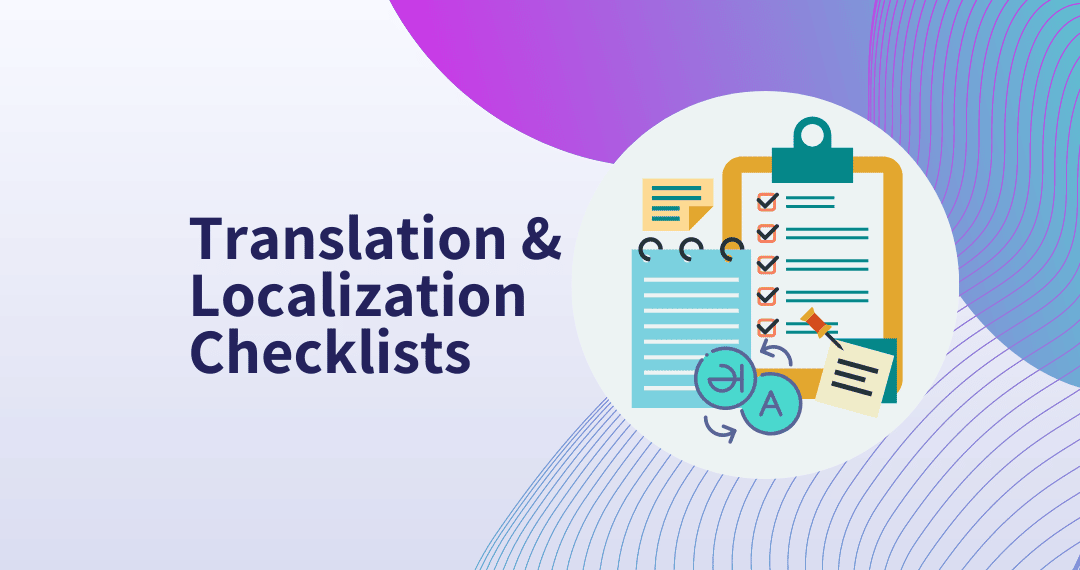Translation and localization are complex processes and as such, there are many stumbling stones which can lead to arguments, confusion, delays and unexpected costs.
Usually, there are various experts involved in these projects and each one of them has a specific task. It is the responsibility of the project manager to keep track of each project.
However, having a project manager for your localization and translation projects does not ensure that everything will go smoothly.
In fact, each project has its own peculiarities and requirements. If these are not clearly stated and defined, mistakes are unavoidable. Errors, in turn, often lead to the re-working of the whole project, which can be a costly and time-consuming affair.
In order to obtain optimal end results, one needs to have clear expectations. What’s more, organization and clarity are crucial in order to efficiently achieve your goals.
In this regard, creating a checklist for your localization and translation projects can help you stay on the right track. Indeed, checklists are an essential tool to help you not only to plan your project but to also execute it smoothly, staying away from confusion and errors.
In the following blog, you will learn everything you need to know about creating the perfect checklist for your translation and localization projects.
Why localization and translation projects can be complex
People often underestimate the complexity of localization and translation projects.
Both localization and translation projects consist of several processes or stages, such as the collection of source files, analysis of the source files, assembly, revision, testing and final delivery. Each one of these steps is equally important and, thus, should be taken into consideration.
Also read: Localization vs Globalization vs Internationalization vs Translation

What’s more, localization and translation teams are comprised of experts from all over the world. This means that some urgent matters might take longer due to time differences between the time zones in which experts are working.
Oftentimes, localization and translation projects involve several stakeholders. Anyone who is affected by the decisions regarding the localization process is considered a stakeholder. For instance, the financial director of the company, the product owner, developers, content creators, etc.

Indeed, when there are several stakeholders involved, decisions regarding translation and localization are much harder to make. This in turn might affect the overall process and even lead to delays.
All in all, localization and translation are processes consisting of several steps which are operated by a number of different experts. In addition, decisions are often taken by the stakeholders and oftentimes this can lead to misunderstanding, confusion, errors and delays.
Thus, any tool that could improve the workflow is well-appreciated. In this regard, translation and localization checklists are a must!
Also read: Localization & Translation Costs – Breakdown Of Factors Involved
What is a translation/ localization checklist?
A translation or localization checklist is a list of all the important information about a project.

While we often use to-do checklists in our everyday life, translation and localization checklists are different.
In fact, translation and localization checklists aim to present the most important aspects of a project in a concise and clear way. What’s more, project checklists do not state the tasks to be done.
Instead, this type of checklist provides a clear overview of all the client’s requirements, so that the project manager can assign the right tasks to qualified experts. These experts, in turn, can follow the instructions in the checklist in order to provide high-quality output.
Checkout: Ultimate Guide for SaaS Localization: Checklist & Best Practices
What to include in your checklist?
As we have already mentioned, project checklists contain the most important information about a translation/ localization project.
There are no specific requirements on what to include in your checklists. Just think about how you imagine the end result, and note down all your wishes and specifications.
Also read: Top Qualities Of a Good Translation
Here are some suggestions on what to include in your translation/ localization checklist:
- Number of files in the translation project
- Word count
- Type of source files (e.g. pdf files, a Word document, a web page, etc.)
- Delivery file formats and method of delivery
- Target locale and language
- Target audience
- Elements to be translated/ to be left in the source language
- Images/ graphs to be localized
- Any style guides or glossaries available
- Tone of voice
- Preferred fonts, colours, etc.
- Special instructions or requirements
- Confidentiality instructions
Overall, localization and translation checklists are a great way to provide a concise overview of the localization or translation project and your requirements, which can in turn make the whole process much more efficient.
Download editable translation project checklist for free
Benefits of having a checklist
Translation and localization checklists are a must since they bring many benefits. Here are the main advantages of compiling a checklist for your translation and localization projects.
Have a clear overview of your project: Translation and localization checklists are a great way to have a firm grasp of the scope of your localization or translation project.
A checklist contains all the important information about your project and thus, can be helpful to both the client and the translation/ localization team responsible for the project.
On one hand, the client can write down their preferences. For example, whether they want a more formal tone or a friendlier one for their textual content.
Also read: What Is a Translation Style Guide : Free Template + Examples
On the other hand, the experts working on the project can have a quick overview of its requirements and specifications. In this way, they can get down to work without having to worry about any lack of clarity.
Set clear expectations: Checklists contain all important aspects of a project, compiled in a single file. In other words, everything that needs to be managed can be found there. In this way, all parties involved, such as clients, project managers, linguists, graphic designers, developers, etc., are on the same wavelength.

This in turn creates clear expectations of what needs to be dealt with. Project managers can easily assign specialists to work on each of the required aspects. At the same time, the people working on the project have clear outlines of what is expected of them to deliver.
Stay organized: Checklists are a great option for any project, regardless of its size, since they can help you stay organized.
Translation and localization checklists contain all the requirements for a project. The project manager in turn should follow all your instructions and send the files to the right experts.
For example, if you have noted down that you want all of your graphs and images localized, the project manager just needs to assign the task to the localization expert.
In this way, a checklist can help the project manager stay organized and work more efficiently.
Avoid confusion and save time: Checklists are incredibly simple to make, yet they can save you a lot of trouble.
Instead of sending long emails back and forth, wasting time and effort, your checklist can contain any information that you find important. So, in case a translator is unsure about a certain aspect of the project, they can simply have a look at the checklist.
Conclusion
Creating checklists for your localization and translation projects is a simple way to provide a detailed description of your desired end result.
On one hand, a checklist is helpful for a client to get across their ideas. On the other hand, the linguists and specialists working on the project can have a clear idea of what is expected of them.
Indeed, localization and translation checklists can help you stay organized to achieve your goals!
Also read: 7 Reasons to Work With a Translation Company on Your Next Project




